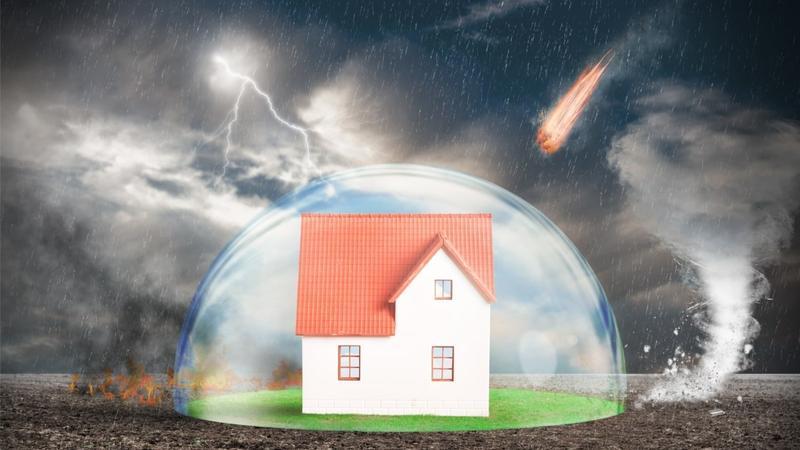PRESS RELEASE: December 7, 2011 - A storm can do a lot of damage to a home; whether from wind, snow, hail, lightning or any other weather danger. InsuranceHotline.com reminds consumers to be aware of what is covered under a homeowner’s insurance policy and what is not – as well as the steps each homeowner should take to reduce the chance of weather related damage.
From winter’s blizzards to summer thunderstorms, the weather can wreak havoc. Some of the most common weather damage claims involve missing shingles, toppled trees and water damage from rain or melting snow. Not every weather damage claim will be covered under the standard homeowner’s insurance policy, however, so it’s important to know the difference.
What Is Generally Covered Under Standard Policies
The coverage under any homeowner’s policy depends greatly on the type of policy that has been selected. The most comprehensive policy in the market will likely provide coverage for the following types of weather damage, with some caveats:
- Lightning
- Wind and Hail (exterior damage only unless the weather caused an opening in the home)
- Damage from Falling Debris (including trees and branches)
- Water damage from rain, only if the storm was responsible for allowing water to enter the home
Remember that damage to the contents of the home is only covered if the policy includes contents coverage; it is important to consider this when shopping for a home insurance quote.
Optional Coverage and Uninsurable Perils
Standard homeowner’s policies do not provide coverage for certain weather related perils; these include preventable issues or maintenance issues and certain predictable weather related items. Homeowners will require optional coverage for earthquake damage. This is separate from standard home insurance because it is a peril specific to the area in which the home is built.
Some items are considered uninsurable perils – this means that there is no coverage available for these items under any policy. These are items considered preventable by homeowners and include:
- Freezing of pipes and resulting damage
- Snow melting or movement
- Landslides
- Water damage for water entering the home due to poor maintenance
Taking Action to Prevent Weather Damage
There are steps homeowners can take to reduce or avoid weather damage. It is always the homeowner’s responsibility to take action and keep their home as safe as possible. Not all weather damage can be prevented, but everyone can reduce the risks. A home can be kept safe from some types of damage by:
- Taking appropriate steps to prevent pipes from freezing especially in cottages not in use
- Clearing away snow build-up from roofs and areas where snow slides might take place
- Keeping roofs in good condition to stand up to stormy weather
- Awareness of specific dangers in the area where the home is located, such as bodies of water that could flood, and taking appropriate measures
Prevention is always a better choice than filing a claim and having to make repairs, so homeowners should take steps wherever possible to avoid weather related damage. While a storm cannot always be predicted, potential areas of damage can and preparing for stormy weather is the best way to avoid a claim. When comparing home insurance quotes, it is vital that consumers ask about optional coverage and uninsurable perils on the policy.
